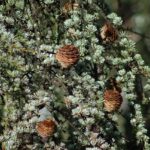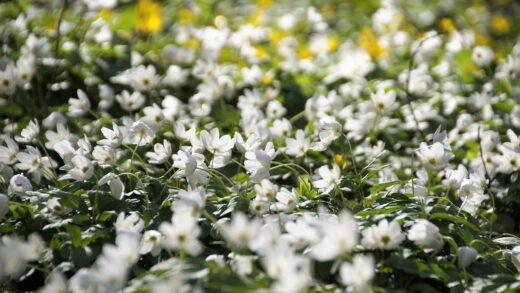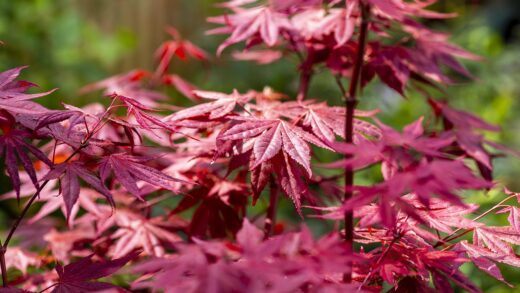Moss rose is typically grown as a tender annual, meaning it completes its life cycle in a single growing season and is killed by the first hard frost of autumn. In its native subtropical environment, it can behave as a short-lived perennial, but for most gardeners in temperate climates, overwintering the plant itself is a significant challenge. However, this does not mean the vibrant beauty of your specific plants has to be lost forever. The most reliable methods for ensuring a new generation of moss rose next spring involve collecting seeds or, with some effort, attempting to bring the plants indoors before the cold arrives.
Understanding moss rose as an annual
In the majority of gardening zones, moss rose is classified and grown as an annual plant. This designation means that it is expected to germinate from seed, grow, flower, produce new seeds, and then die all within one year. The plant’s physiology is not adapted to survive freezing temperatures. When the first hard frost of fall or winter occurs, the water-filled succulent leaves and stems will freeze, rupture, and the entire plant will turn to mush and die back to the ground. This is a natural and expected conclusion to its life cycle.
This annual life strategy has its advantages. It allows for a massive and brilliant display of colour throughout the hottest parts of the summer, a time when many other plants may struggle. Because the plant invests all of its energy into flowering and seed production in a single season, the floral show is often more prolific than that of many perennials. Understanding and accepting its annual nature is key to avoiding disappointment and planning your garden accordingly for the following year.
While the parent plant will not survive the winter outdoors in cold climates, moss rose often ensures its own succession through self-seeding. As the flowers fade, they form small seed pods that eventually ripen and split open, scattering dozens of tiny black seeds onto the soil below. In many cases, these seeds can survive the winter dormant in the soil and will germinate the following spring once the soil warms up. This can result in a delightful, though sometimes unpredictable, patch of “volunteer” seedlings.
It is important to note that if you are growing modern hybrid cultivars, the plants that grow from self-sown seeds may not look identical to the parent plant. Hybrid plants are the result of specific crosses, and their seeds can revert to traits from one of the original parent species or produce a variety of different colours and forms. While this can create a charming and surprising mix, if you want to preserve a specific colour or double-flowered form, collecting seeds manually or taking cuttings is a more reliable method.
More articles on this topic
Collecting and storing seeds for the next season
Saving seeds from your favourite moss rose plants is the easiest and most effective way to “overwinter” them and guarantee a supply for the following year. The process begins in late summer and early autumn as the flowering season starts to wind down. To collect seeds, you must allow some of the flowers to complete their full cycle without deadheading them. After a flower has been pollinated and its petals drop, a small, capsule-like seed pod will form at its base.
You will need to monitor these seed pods carefully. Initially, they will be green and fleshy, but as they mature, they will turn brown and dry. The optimal time for collection is when the pods are dry but just before they split open to release the seeds. You can gently test a pod by squeezing it; if it feels brittle and is starting to crack, it is ready. Carefully snip the pods off the plant and place them in a paper bag or a small container.
Once you have collected the dry pods, you can break them open over a sheet of paper to release the contents. You will find numerous tiny, black, dust-like seeds inside. It is important to ensure the seeds are completely dry before storing them to prevent mould and rot. You can leave them spread out on the paper in a well-ventilated room for a few days to air dry. Any bits of chaff or pod remnants can be gently blown away or sifted out.
For storage, place the clean, dry seeds in a small paper envelope or a tightly sealed glass jar. Be sure to label the container with the plant variety and the date of collection. Store the seeds in a cool, dark, and dry location, such as a refrigerator or an unheated closet. Properly stored moss rose seeds can remain viable for several years, providing you with a free and easy source of new plants for many seasons to come.
More articles on this topic
Attempting to overwinter plants indoors
While it is challenging, it is possible to overwinter entire moss rose plants indoors, treating them as houseplants until the following spring. This is most feasible for plants that are already growing in containers. The process must begin before the first frost of the season. When nighttime temperatures start to consistently drop below 10°C (50°F), it is time to prepare the plants for their move inside. Trying to dig up garden-grown plants can be stressful for them and is often less successful.
Before bringing any plant indoors, it is crucial to inspect it thoroughly for any pests such as aphids, spider mites, or whiteflies. The warm, dry environment of a heated home can cause pest populations to explode. To be safe, give the plant a gentle but thorough spray with water to dislodge any hitchhikers. You may also want to treat it proactively with insecticidal soap or neem oil. Also, check the soil for any unwanted guests like slugs or ants.
Indoors, the plant will need the sunniest location you can possibly provide. A south-facing windowsill that receives at least six hours of direct sunlight is essential. If you do not have a location with sufficient natural light, you will need to supplement with a strong grow light to prevent the plant from becoming weak and leggy. Even with optimal light, the plant’s growth and flowering will likely slow down considerably during the shorter days of winter.
During its time indoors, you must drastically reduce your watering routine. The plant will be in a semi-dormant state and will not be using as much water. Allow the soil to dry out completely between waterings, perhaps only needing a drink once every few weeks. Do not provide any fertilizer during the winter months. In the spring, as the days lengthen and you see signs of new growth, you can gradually increase watering and begin the process of hardening the plant off before moving it back outside.
Preparing garden beds for the winter
Once the first hard frost has killed your in-ground moss rose plants, the final step is to prepare the garden beds for winter. It is important to remove all the dead and blackened plant material from the soil surface. Leaving this debris in place over the winter can provide a safe haven for fungal spores and the eggs of pest insects, which can create problems for your garden in the following spring. Rake up the dead foliage and add it to your compost pile, provided it was free of disease.
This end-of-season cleanup not only helps with disease and pest control but also leaves your garden looking tidy and ready for the next planting season. Once the bed is cleared, you have the option of adding a layer of organic matter. Spreading a one- to two-inch layer of compost, shredded leaves, or well-rotted manure over the soil surface can be beneficial. Over the winter, this material will slowly break down, enriching the soil and improving its structure for the plants you intend to grow next year.
If you are hoping that your moss rose will self-seed, you should be a bit more gentle with your cleanup. After removing the bulk of the dead plants, try to disturb the soil surface as little as possible. The tiny seeds will be resting on or just under the surface, and deep cultivation or heavy mulching can bury them too deeply to germinate successfully. A light layer of compost is usually fine, but avoid thick layers of wood chips or other heavy mulch in areas where you want seedlings to emerge.
By taking these simple steps, you close out the growing season for your moss rose properly. This prepares the ground for a healthy start in the spring, whether you plan to sow the seeds you collected, purchase new plants, or take your chances with volunteer seedlings. It is a final act of care that sets the stage for future gardening success and ensures the space is ready for another year of vibrant colour.


















